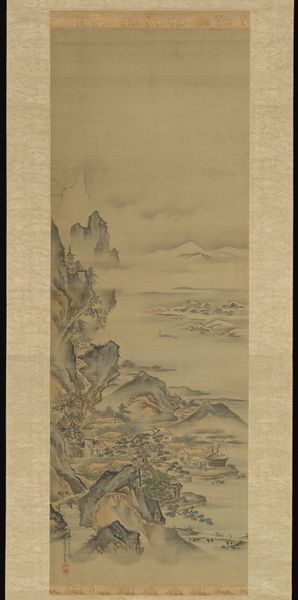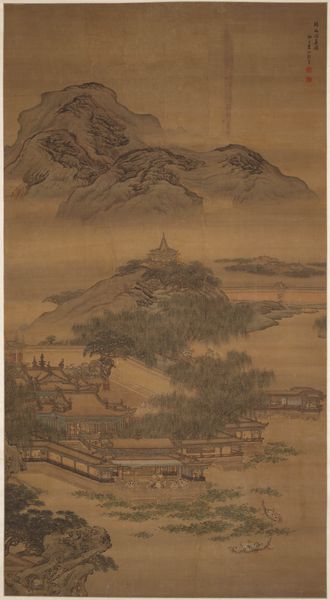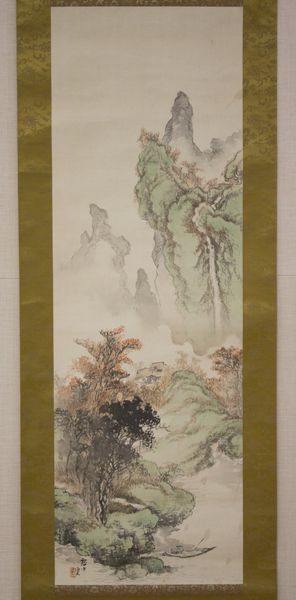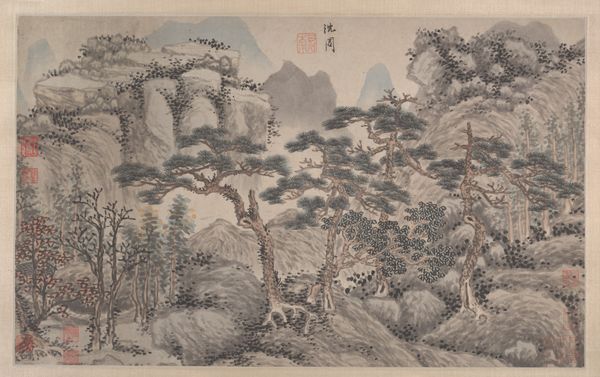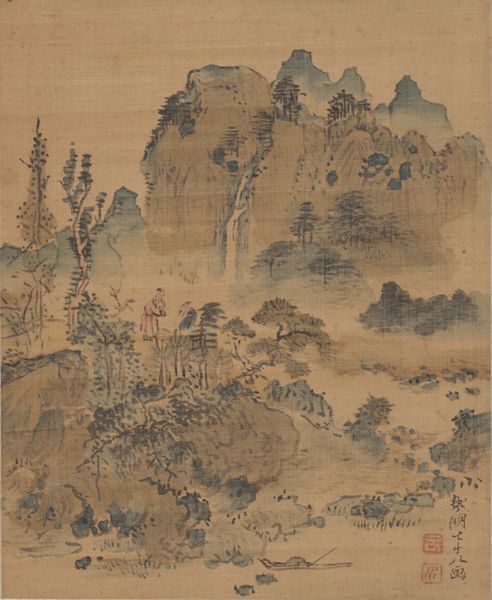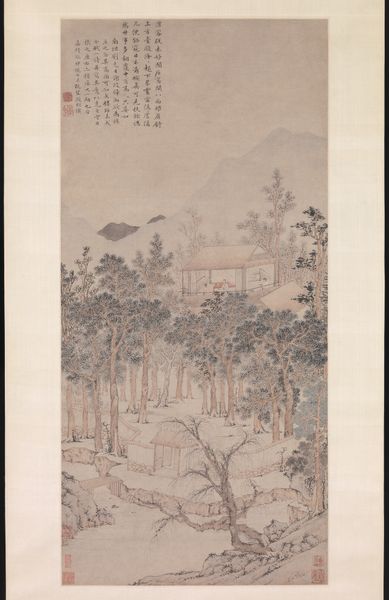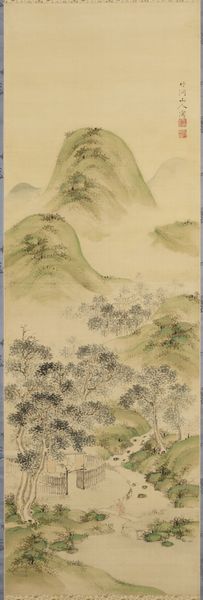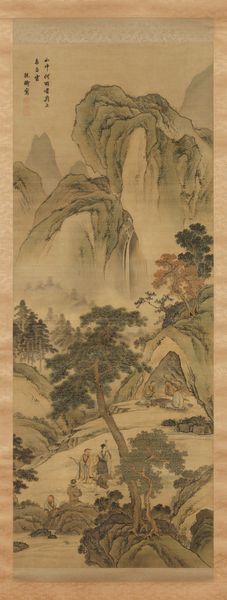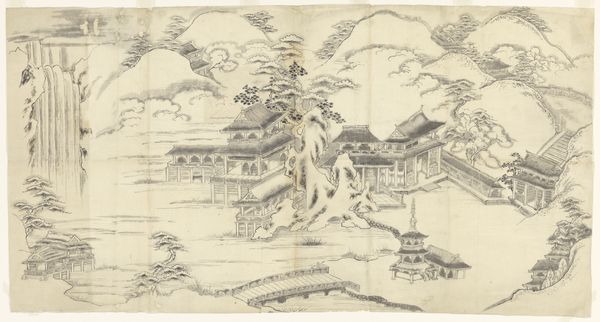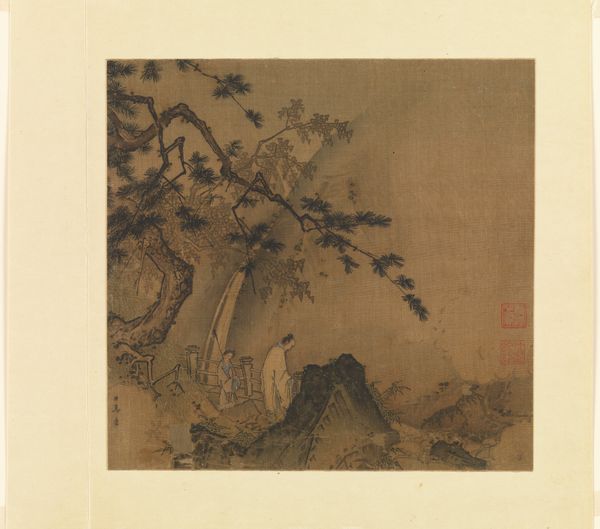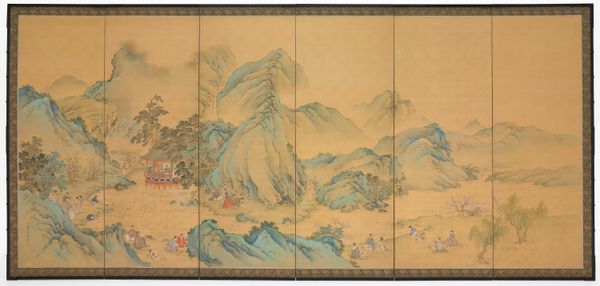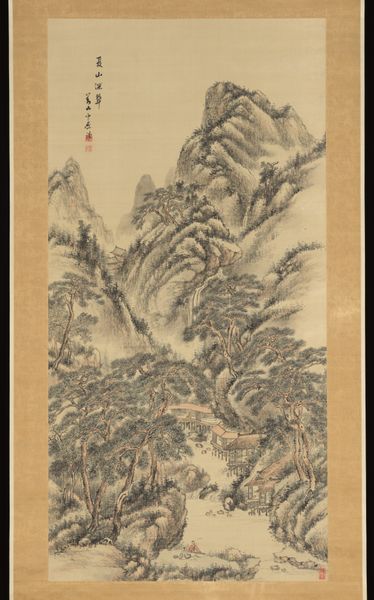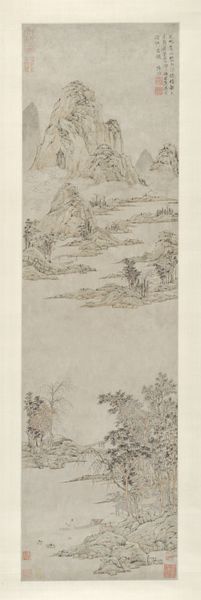
painting, watercolor
#
water colours
#
painting
#
asian-art
#
landscape
#
oil painting
#
watercolor
#
orientalism
#
watercolor
Dimensions: height 181.6 cm, width 101.0 cm, height 1.5 cm, width 109.5 cm, width 120.7 cm, diameter 5.5 mm, diameter 4.6 cm, height 8.2 cm, width 9.2 cm, length 125 cm
Copyright: Rijks Museum: Open Domain
Yuan Jiang painted "Villa Dongshan" using ink and color on silk. Here, the symbol of the mountain looms large, a motif deeply embedded in the cultural psyche. In ancient China, mountains were not merely geological features; they were sacred spaces, dwelling places for immortals and symbols of stability and permanence. The mountain rising amidst mist connects to the ancient Taoist traditions where misty mountains represent the transition between the human and spirit realm, evoking a sense of mystery and the sublime. Interestingly, mountain imagery persists throughout art history, appearing in medieval European landscapes, such as those by Konrad Witz, where mountains symbolize spiritual ascent or divine presence. Over time, the mountain has been passed down through history, shifting from the sacred to the aesthetic. This painting engages us on a deep, subconscious level, resonating with our collective memory of nature's power and tranquility. It's a powerful force, engaging viewers on a deep, subconscious level. The mountain motif resurfaces, evolved, and has taken on new meanings in different historical contexts.
Comments
rijksmuseum about 2 years ago
⋮
A group of people delight in the pleasurable repose in a garden and listen to music. In 18th-century China, it became fashionable to create one’s own private garden as well as engage a famous painter to depict it. Yuang Jiang was well-known for such paintings.
Join the conversation
Join millions of artists and users on Artera today and experience the ultimate creative platform.
